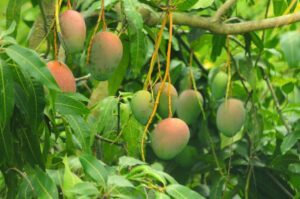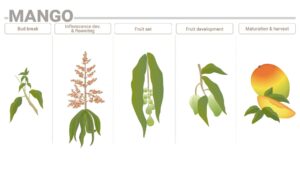In this study a wide range of spray applications, made during the inflorescence development period and afterwards, but before the onset of fruit drop, are evaluated for their ability to increase fruit retention and yield. Substances included were potassium nitrate, low biuret urea, naphthaline acetic acid (NAA), gibberellic acid (GA3), and CPPU (synthetic cytokinin - N-(2-chloro-4-pyridyl)-N-phenylurea). These were applied in combination or singly.
In another experiment, KNO3 at 2 or 4% (w/v) was sprayed once or twice during the inflorescence development period on young Tommy Atkins, Heidi or Kent trees, to increase fruit retention and yield. In all instances, fruit retention and yield were increased by KNO3 inflorescence spray application. In Tommy Atkins, one 4% application at full bloom appeared to be best, whereas in Kent two applications of 4% resulted in the greatest benefit (Table 1). In Heidi two applications of 2% KNO3 resulted in highest retention and yield (Table 1). KNO3 spray application during the inflorescence development period was considered the best option to reduce post fruit set drop and to increase tree yield in mango.
Table 1. Effect of various foliar sprays with potassium nitrate on fruit retention and fruit yield per tree in each of the varieties used.




